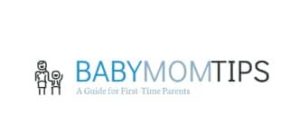Is your little one starting to outgrow their crib? Are they constantly trying to climb out and explore the world beyond the bars? If so, it may be time to consider transitioning them into a toddler bed. But how do you know when the right time is? In this article, we will explore the signs that indicate your child is ready for this big transition, from their newfound independence to their physical readiness. So if you’re curious about when to make the switch from crib to toddler bed, keep reading!
Review contents
Physical signs
Climbing out of the crib
One of the physical signs that it may be time to transition your baby from a crib to a toddler bed is when they start climbing out of the crib. This can be a safety concern, as your little one could potentially fall and injure themselves. If you consistently find your baby attempting to climb out of the crib, it may be a clear indication that they are ready for a larger sleeping space.
Feeling cramped in the crib
As your baby grows and develops, they may start to feel cramped in the crib. This can result in discomfort and difficulty settling down for sleep. If you notice your baby consistently rolling around, kicking, or appearing restless in the crib, it may be a sign that they need more room to stretch out and move during sleep.
Hitting head or limbs on the crib rails
Another physical sign that your baby is ready for a toddler bed is if they frequently hit their head or limbs on the crib rails. This can happen when they are tossing and turning in their sleep or trying to navigate the limited space of the crib. If you notice any bruises or marks on your baby’s head or limbs, it may be a sign that they need a larger sleeping area to avoid these accidents.
Developmental signs
Reaching milestones
When your baby starts reaching significant developmental milestones, such as walking or talking, it may be a sign that they are ready for a toddler bed. These milestones indicate that your little one is becoming more independent and may benefit from the freedom and accessibility that a toddler bed provides.
Showing interest in independence
If your baby begins showing interest in doing things on their own, such as getting dressed or brushing their teeth, it may be an indication that they are ready for a toddler bed. This newfound independence can extend to their sleep environment as well, as they may want to have more control over getting in and out of bed.
Expressing discomfort with confinement
As babies grow, they may start to express their discomfort with confinement in the crib. This can manifest as crying or fussing when it’s time to go to bed or resisting being put in the crib altogether. These behaviors may be a sign that your little one is ready for a bigger bed that gives them more freedom and space to move around.
Safety concerns
Risk of falling
One of the main safety concerns with keeping your baby in a crib for too long is the risk of falling. As they become more mobile and adventurous, they may attempt to climb out of the crib, leading to potential injuries from falls. Transitioning to a toddler bed with lower sides can help reduce this risk and provide a safer sleeping environment for your child.
Getting stuck between crib rails
As your baby grows, there is a chance that they may start getting stuck between the crib rails. This can be a frightening experience for them and a safety hazard. Moving to a toddler bed with spaced-out or adjustable rails can help prevent these situations and ensure your child’s safety.
Potential for injury
Another safety concern with keeping your baby in a crib for too long is the potential for injury. As they begin to move and play more actively in the crib, they may accidentally hit their head or limbs on the crib rails or other hard surfaces. Transitioning to a toddler bed can reduce the risk of these injuries by providing a more spacious and safe sleeping environment.
Transition readiness
Ability to follow instructions
To determine if your baby is ready for a toddler bed, consider their ability to follow instructions. If they can understand and follow simple directions, such as “stay in bed” or “lie down,” it may indicate that they are developmentally ready for the transition.
Understanding bedtime routine
Another factor to consider is your baby’s understanding of the bedtime routine. If they respond well to a consistent routine and show comprehension of the steps involved, such as changing into pajamas or reading a bedtime story, it may be a sign that they are ready for a toddler bed.
Successfully using a potty
If your little one has achieved success in potty training and can use the bathroom independently, this may indicate their readiness for a toddler bed. Being able to get out of bed in the middle of the night to use the potty can be an essential consideration when transitioning from a crib.
Emotional cues
Resistance to naptime or bedtime
If your baby starts resisting naptime or bedtime more frequently, it may be a sign that they are ready for a toddler bed. This resistance can be a result of feeling constrained or seeking more independence. Pay attention to any increased fussiness or tantrums around sleep times, as it may indicate their frustration with the crib.
Increased bedtime struggles
When your baby begins to show more challenging behaviors during bedtime, such as refusing to stay in the crib or constantly wanting to get out, it may suggest their readiness for a toddler bed. These struggles can be a response to feeling restricted or desiring more freedom in their sleep environment.
Requesting a big kid bed
If your little one starts expressing a desire for a “big kid bed” or shows interest in the beds of older siblings or friends, it may be a clear indication that they are emotionally ready for the transition. This interest can demonstrate their understanding of the concept and desire to move on from the crib.
Additional space needs
Growing taller or gaining weight
Babies grow rapidly, and as they do, their physical space needs change. If you notice your baby growing taller or gaining weight to the point where they are starting to feel cramped in the crib, it may be a sign that they need a larger sleeping space provided by a toddler bed.
Requiring more room for movement
As babies become more active and mobile, they naturally require more room for movement, even when they are asleep. If you observe your baby rolling around, kicking, or attempting to move in various positions while in the crib, it may be an indication that they need a bigger sleep space that allows for more comfortable movement.
Sharing a bedroom with a sibling
If you plan on having your baby share a bedroom with an older sibling, transitioning them to a toddler bed becomes necessary. Sharing a room often requires having separate sleeping spaces, and a toddler bed is typically the best option for accommodating both children comfortably.
Sleep disruptions
Frequent waking up during the night
If your baby starts waking up more frequently during the night, it may be a sign that they are no longer finding the crib comfortable or satisfying for their sleep needs. Transitioning to a toddler bed can provide a more spacious and comfortable sleeping area, reducing night-time awakenings.
Restless sleep patterns
Restless sleep patterns, such as constant tossing and turning or frequent changes in sleep positions, can be a sign that your baby is ready for a toddler bed. A larger sleep surface can offer them the freedom to move without feeling restricted and enhance their overall sleep quality.
Difficulty falling back asleep in the crib
If your baby consistently struggles to fall back asleep when waking up during the night while in the crib, it may indicate their readiness for a toddler bed. The crib’s limited space may make it challenging for them to settle down again, whereas a toddler bed can provide a more conducive environment for self-soothing and falling back asleep.
Crib limitations
Reaching the weight or size limit
Most cribs have weight and size restrictions, and if your baby exceeds these limits, it’s a clear sign that they have outgrown the crib. Continuing to use a crib beyond its intended capacity can compromise their safety and comfort. Transitioning to a toddler bed ensures that your growing baby has an appropriate and secure sleeping space.
Outgrowing the crib’s height adjustment
Many cribs come with adjustable height settings for the mattress. If your baby has reached the point where even the lowest setting is no longer suitable, it may be an indication that they need a toddler bed to accommodate their height and provide a secure sleeping environment.
Needing to lower the crib mattress to its lowest position
Lowering the crib mattress to the lowest position is typically one of the last adjustments before transitioning to a toddler bed. If you find yourself needing to lower the mattress to its lowest setting, it suggests that your baby has outgrown the crib and may require a larger sleeping space and increased freedom of movement.
Social readiness
Interacting with peers at daycare or preschool
If your baby is attending daycare or preschool and showing increased interest in interacting with peers, it may be a sign that they are socially ready for a toddler bed. Sharing a sleeping space with others can foster a sense of belonging and friendship, making the transition to a toddler bed a positive social experience.
Copying older siblings’ behaviors
Children often learn by imitating older siblings, and if your baby starts copying their siblings’ behaviors, it can be an indication of social readiness for a toddler bed. Seeing their siblings in bigger beds may spark their desire for independence and motivate them to make the transition themselves.
Wanting to be more involved in family activities
If your baby is expressing a desire to be more involved in family activities and rituals, such as storytime or morning cuddles in bed, it may be a sign that they are socially ready for a toddler bed. Being able to participate in these shared experiences can enhance their sense of belonging and contribute to their overall emotional well-being.
Sibling transition
Expecting a new baby
If you are expecting a new baby and plan to reuse the crib, transitioning your older child to a toddler bed becomes necessary. This allows the new baby to have a safe sleeping space while giving your older child the opportunity to adjust to their new sleeping arrangement in advance.
Preparing for crib reuse
If your baby has outgrown the crib, but you plan to reuse it for a future child, transitioning your older child to a toddler bed is essential. This ensures that your older child has a suitable sleeping surface while allowing you to prepare the crib for the arrival of the new baby.
Encouragement from pediatrician
If you are unsure about whether your baby is ready for a toddler bed, you can seek guidance from your pediatrician. They can evaluate your child’s physical and developmental readiness for the transition and provide expert advice and encouragement based on their knowledge of your baby’s unique situation.
In conclusion, there are several signs to look out for that indicate it may be time to transition your baby from a crib to a toddler bed. Physical signs, such as climbing out of the crib or feeling cramped, can suggest that your little one needs more space to sleep comfortably and safely. Developmental signs, like reaching milestones and showing interest in independence, highlight their growing need for freedom and autonomy. Safety concerns, including the risk of falling and getting stuck between crib rails, emphasize the importance of providing a secure sleeping environment. Transition readiness, emotional cues, additional space needs, sleep disruptions, crib limitations, social readiness, and sibling transitions are all important factors to consider. By paying attention to these signs and observing your child’s behavior and development, you can make an informed decision about when it’s the right time to move your baby from a crib to a toddler bed. Remember, every child is unique, and it’s important to prioritize their safety, comfort, and emotional well-being throughout this transition.






























